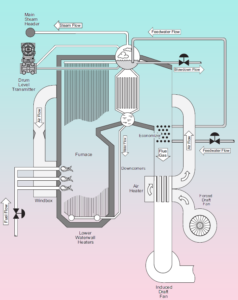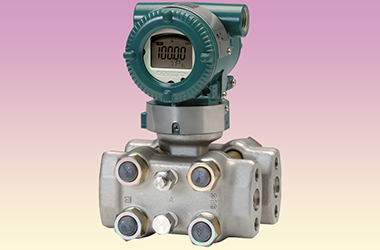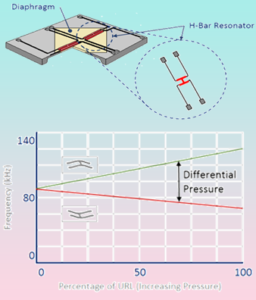
The primary function of a boiler is to convert water to steam. The steam provides process heat or produces electricity. An objective for safe and efficient boiler operation is to maintain a constant steam and water interface level in the boiler drum.
This can be accomplished by maintaining a balance between the amounts of steam leaving and water entering the boiler drum. Unfortunately, boiler drum level control is complicated by changes in heat, changes to electrical load requirements and variations in the fuel and air supply.
Challenges
 Boiler drum level is a critical measurement necessary to maintain efficient, reliable, and safe operations. If the boiler steam/water interface level is too low, it can lead to boiler tube damage due to overheating. This would mean significant cost and downtime in order to make the necessary repairs as well as possible safety risks. If the boiler level is too high, excess moisture in the steam can cause issues downstream such as reduced heat exchanger efficiency, steam trap wear, and erosion.
Boiler drum level is a critical measurement necessary to maintain efficient, reliable, and safe operations. If the boiler steam/water interface level is too low, it can lead to boiler tube damage due to overheating. This would mean significant cost and downtime in order to make the necessary repairs as well as possible safety risks. If the boiler level is too high, excess moisture in the steam can cause issues downstream such as reduced heat exchanger efficiency, steam trap wear, and erosion.
One North American chemical manufacturer was experiencing issues with their boiler level measurement due to changes in their heat/electrical demand. Typical static pressures in the boiler would run around 2800 psig. Significant static pressure changes during startup and shut down would seriously affect the level reading. Additionally, pressure spikes would cause shifts in the zero reading. That required maintenance personnel to constantly check the calibration.
Solution
To address these issues, the customer replaced the differential pressure transmitters on the boilers with Yokogawa’s EJX130A with DPharp technology. DPharp’s resonant silicon sensor incorporates dual resonators, which are self-compensating for changes in static pressure. Differential frequency between the resonators is used for measurement of differential pressure or water level in the boiler drum. Static pressures applied to the dual resonator sensor within DPharp do not lead to a differential frequency change as both resonators are affected equally. Upon startup, minimal output shifts were seen due to changes in static pressure leading to superior performance in the boiler drum level measurements.
Key Advantages
- Superior accuracy and stability enable efficient operation with no downtime.
- Reduced static pressure effect reduces OPEX by eliminating constant maintenance attention.
- Improved overpressure protection increases efficiency and safety.
This case study article was contributed by Yokogawa Corporation.
Print this page

